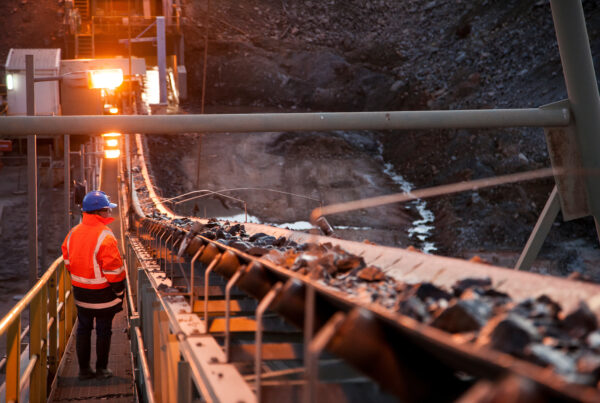When it comes to heavy machinery, the stability and integrity of its foundation are paramount. The foundation serves as the bedrock upon which the entire machinery structure rests, providing the necessary support for optimal performance. To ensure the reliability and safety of heavy machinery, conducting thorough foundation inspections is not just a good practice but an essential one.
Critical components such as load distribution, alignment, and vibration control are contingent on a solid foundation.
Identifying and addressing foundation issues early on can prevent catastrophic failures, costly repairs, and unplanned downtime. Issues such as cracks, settlement, or uneven surfaces can compromise the stability of the machinery, leading to operational inefficiencies.
Beyond immediate concerns, regular foundation inspections contribute to the longevity of heavy machinery. By proactively identifying and rectifying potential problems, operators and maintenance personnel can extend the lifespan of the equipment, reducing the need for major overhauls or replacements.
In this guide, we will delve into the comprehensive process of conducting foundation inspections for heavy machinery.
Common Foundation Issues in Heavy Machinery

The foundation of heavy machinery is subjected to tremendous stress and pressure, making it susceptible to various issues over time. Identifying these common foundation problems is crucial for maintaining the structural integrity and functionality of heavy machinery.
Identifying Signs of Foundation Problems
Cracks and Fractures:
- Visible cracks on the surface of the foundation or along structural components are often indicators of underlying issues. The size, pattern, and location of cracks can provide valuable insights into the nature and severity of the problem.
Uneven Settling:
- Differential settling, where one part of the foundation sinks more than another, can lead to misalignments and operational inefficiencies. This may manifest as uneven surfaces or tilting of the machinery.
Vibrations and Noise:
- Unusual vibrations or excessive noise during machinery operation may signal foundation problems. Vibrations can accelerate wear on components, and identifying their source is crucial for preventive maintenance.
Water Damage:
- Foundations exposed to water or high moisture levels may experience erosion, weakening the structural integrity. Signs of water damage include staining, efflorescence, or soft spots in the foundation.
Soil Erosion:
- Changes in soil conditions around the foundation, such as erosion or soil shifting, can compromise the stability of the machinery. Inspecting the soil in and around the foundation is essential for early problem detection.
Misalignment of Machinery Components:
- Foundation issues can lead to misalignments in machinery components. This may result in increased friction, wear, and potential damage to crucial parts of the equipment.
Impact of Neglected Foundation Issues on Machinery
Reduced Operational Efficiency:
- Neglected foundation problems can lead to misalignments and increased friction, reducing the overall efficiency of the machinery. This inefficiency may result in higher energy consumption and decreased productivity.
Accelerated Wear and Tear:
- Unaddressed foundation issues contribute to accelerated wear and tear on machinery components. This can lead to more frequent breakdowns, increased maintenance costs, and shorter equipment lifespan.
Safety Risks:
- Foundation problems pose significant safety risks to both machinery operators and surrounding personnel. Sudden failures or collapses can result in accidents, injuries, or even fatalities.
Downtime and Production Loss:
- The failure to address foundation issues promptly can result in unplanned downtime for repairs. This downtime can disrupt production schedules, lead to financial losses, and negatively impact a company’s bottom line.
Long-Term Structural Damage:
- Foundation issues, if left unattended, can cause long-term structural damage to the machinery. This may necessitate extensive repairs or, in extreme cases, the replacement of major components or the entire equipment.
Step-by-Step Guide to Foundation Inspections

Foundation inspections for heavy machinery require a systematic approach to ensure a comprehensive assessment of both surface and structural conditions. This step-by-step guide will walk you through the key stages of a thorough foundation inspection.
Visual Inspection: Surface Checks
The first phase of a foundation inspection involves a detailed visual examination of the surface. This step is crucial for identifying obvious signs of wear, damage, or misalignment that may be visible to the naked eye.
Surface Cleanliness:
- Begin by clearing away any debris or obstructions from the foundation surface. This allows for a clearer view and facilitates a more accurate assessment.
Crack Identification:
- Carefully inspect the entire surface for cracks, fractures, or fissures. Pay close attention to the size, length, and patterns of the cracks, as these details can provide insights into the nature of the foundation issue.
Alignment Assessment:
- Check for any visible misalignments or uneven surfaces. Misalignments can indicate underlying foundation problems that may affect the overall stability of the machinery.
Surface Anomalies:
- Look for any unusual features on the surface, such as bulges, depressions, or discolorations. These anomalies may be indicative of subsurface issues that require further investigation.
Documentation:
- Document your findings through photographs and detailed notes. Clear documentation is essential for tracking changes over time and for sharing information with relevant stakeholders.
Structural Assessment: Below the Surface
Once the surface inspection is complete, the focus shifts to a more in-depth evaluation of the structural components beneath the surface. This involves using specialized tools and techniques to assess the foundation’s integrity.
Ground Penetrating Radar (GPR):
- Utilise GPR technology to scan below the surface and identify anomalies or variations in material density. GPR is effective in detecting subsurface issues, such as voids, water infiltration, or changes in soil composition.
Non-Destructive Testing (NDT):
- Employ NDT techniques, such as ultrasonic testing or magnetic particle inspection, to assess the internal condition of foundation materials. These methods help identify hidden flaws or weaknesses without causing damage to the structure.
Soil Testing:
- Conduct soil tests in and around the foundation to assess its load-bearing capacity. Changes in soil composition or stability can directly impact the foundation’s ability to support heavy machinery.
Foundation Material Inspection:
- Inspect the materials used in the foundation construction. Evaluate the condition of concrete, steel, or other materials for signs of degradation, corrosion, or other structural deficiencies.
Professional Structural Evaluation:
- If necessary, involve structural engineers to conduct a detailed evaluation of the foundation. Their expertise can provide deeper insights into the structural integrity and stability of the foundation.
This comprehensive approach ensures that both surface and structural aspects are considered, facilitating early detection and effective resolution of foundation issues in heavy machinery.
Key Components to Focus on During Inspections
Assessing Pads and Footings
Pads and footings play a pivotal role in load distribution, so their condition is paramount. Ensure they are level and properly aligned to prevent uneven weight distribution. Examine for wear and tear, replacing any worn components promptly. Assess the interaction with underlying soil, as settling or erosion can impact their effectiveness.
Inspecting Anchor Bolts and Base Plates
Anchor bolts and base plates provide critical connections between machinery and its foundation. Regularly check the tightness of bolts to prevent shifting, inspect for corrosion or rust, and ensure proper alignment with the machinery. Misalignment can lead to stress concentrations and premature wear.
Preventive Measures and Routine Checks
Implement preventive measures such as regular cleaning, adequate drainage, and routine checks. Establish a schedule for inspections, including daily, weekly, and monthly checks, and involve machinery operators in basic visual inspections during routine operations. Training operators to recognize unusual vibrations and establishing clear reporting procedures contribute to early issue detection. Finally, collaboration with structural engineers for periodic evaluations and consulting professionals for in-depth assessments ensures a comprehensive approach to foundation maintenance.
Collaboration with Structural Engineers
Ensuring the longevity and stability of heavy machinery foundations demands expertise beyond routine inspections. Collaborating with structural engineers is pivotal for a comprehensive assessment. Periodic structural evaluations conducted by professionals reveal nuanced issues that might escape routine checks. For a thorough understanding and interpretation of test results, the insights of structural engineers are invaluable.
Consulting Professionals for In-Depth Assessments
When facing complex foundation challenges, seeking guidance from professionals becomes paramount. Alphatec Engineering specialises in in-depth assessments, employing advanced techniques. Our expertise provides nuanced insights, guiding the most effective and efficient solutions tailored to your machinery’s unique foundation requirements.
Addressing Long-Term Foundation Stability
Alphatec Engineering goes beyond assessments; they offer strategic recommendations for addressing identified issues and ensuring long-term foundation stability. By leveraging our expertise, you gain a proactive partner in maintaining the robustness of your heavy machinery foundations. Elevate your approach to foundation maintenance—partner with Alphatec Engineering for lasting stability.
Experience the Alphatec Advantage: Visit Alphatec Engineering



